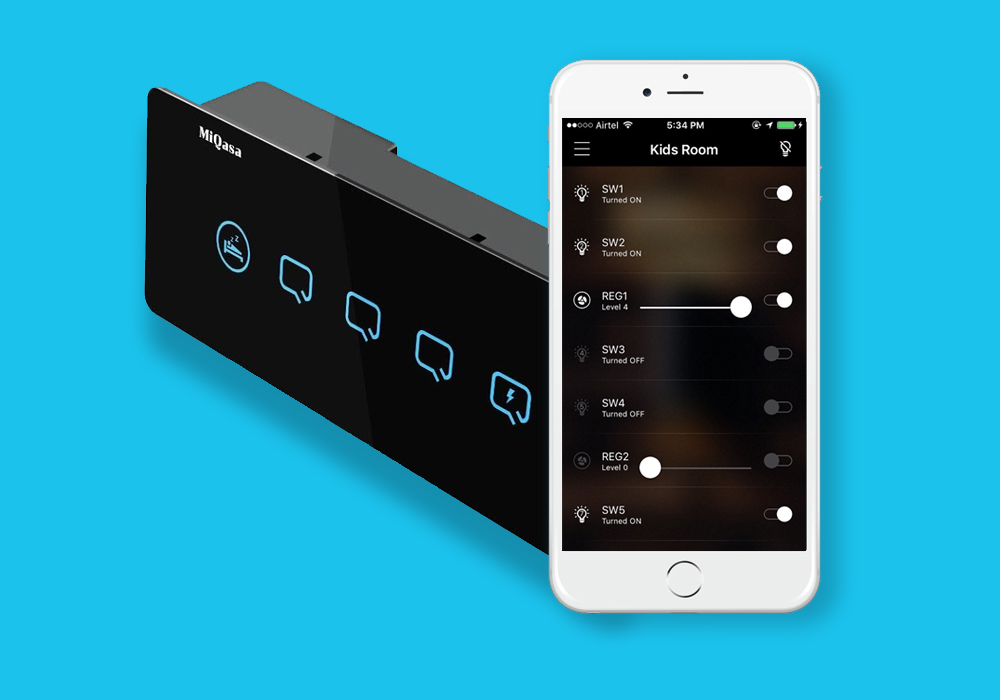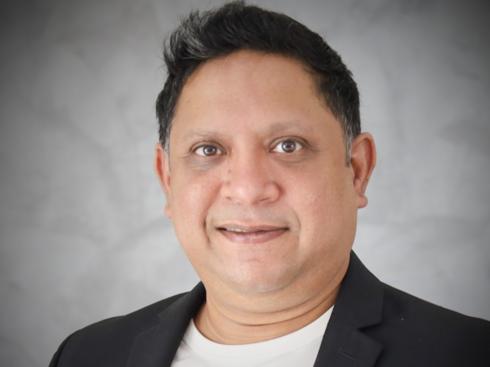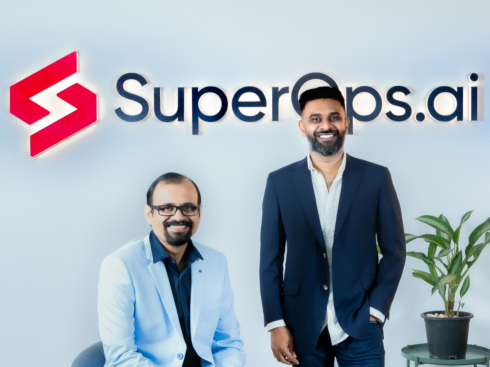The Internet of Things (IoT), much like artificial intelligence, machine learning, and natural language processing is the next evolutionary step in technology.
And, while we might have robots playing concierge at shopping malls and airports and algorithms running aspects of a user’s life, the use cases for IoT are many and varied and, in most cases, expensive.
A key aspect of IoT is the way it has enhanced, shaped, and given birth to ‘Smart Living.’ The small island nation of Singapore is one of the first nations in Asia to adopt the notion of Smart Cities and actively work toward its goal of turning the country into a Smart Nation. Another way of using hardware+software to simplify a user’s life. A user’s home by automating features and functions in it.
No small task for any individual.
But that’s exactly what Santosh Kumar Patil is aiming for, with his startup MIQASA.
Origin Story: From A Technocrat To An Entrepreneur
 “I’m a hard-core technocrat,” confesses Santosh, at the very outset. And he has good reason to call himself so, working in the STEM fields in the US and finally, working with tech and semi-conductors at the TSMC (Taiwan Semiconductor Manufacturing Company). After working with Qualcomm and Intel, Santosh was looking for his next passion project – when he decided to put his latent knowledge of tech and hardware to good use.
“I’m a hard-core technocrat,” confesses Santosh, at the very outset. And he has good reason to call himself so, working in the STEM fields in the US and finally, working with tech and semi-conductors at the TSMC (Taiwan Semiconductor Manufacturing Company). After working with Qualcomm and Intel, Santosh was looking for his next passion project – when he decided to put his latent knowledge of tech and hardware to good use.
The result, an idea – smart living made affordable for the common man.
“Because I was working on cutting edge tech with the TSMC, it didn’t take me long to see past the mobile phone tech and uses of Internet right down to where hardware and software would come together. I felt that IoT was going to catch on like wildfire in the very near future,” he says.
Everyone uses power (energy) in India, for everything – this is Santosh’s justification for entering a relatively nascent vertical. But so much of this energy is wasted or misused – with switches being left on when not required, people forgetting to switch off while leaving in a rush to go out. The scope for household power waste and consequent accidents has always been immense.
And, Santosh, believes strongly that this waste/misuse can be avoided by the use of automation. In his own words,
“The principle of IoT is simple – anything can be controlled via a mobile app through the cloud. By using IoT, you will be connected with your appliance such as fan, geyser etc. anywhere in the world on your smart device. That’s its beauty and its reach.”
MIQASA, which was incorporated in April 2015 in Delaware, Colorado, began in stealth mode, with this single vision and thought process. It received an undisclosed amount of angel funding from the Bay Area with investors such as Taresh Anand, backing the venture. The naming of the company comes from a take on the Spanish term mi casa meaning “my home,” which played into the founder’s vision of automating the homes of average Indians.
But since a business cannot run on vision alone, Santosh, the sole founder of the enterprise split the product into its two essential halves – hardware and software.
Proprietary RF, 12 Module Switches… And More
Hyderabad-based MIQASA’s core product is a switchboard and the first prototype of the same was built on a 12 switch module. It was called Elegant Touch and worked on the principle of interfacing feather touch with traditional switches and connecting it online in order to control/automate appliances.
“Traditional automation by legacy companies such as Honeywell and Schneider have used Cath cables which are connected to the switchboard and run into the lakhs for automating a single home. We have simplified the process and placed everything on the mobile.”
The process as Santosh puts it goes like this: each MIQASA switchboards works through a ‘gateway’ unit on wireless technology – in MIQASA’s case, this is proprietary RF (radio frequency) that is installed in the users’ home. The gateway is the intelligence hub of the installation and enables access to the cloud through the app. The router will be connected to the user’s smart device (phone/tablet) through the cloud and automating tasks such as switching electrical appliances on and off, scheduling activities etc. can be accomplished via mobile.
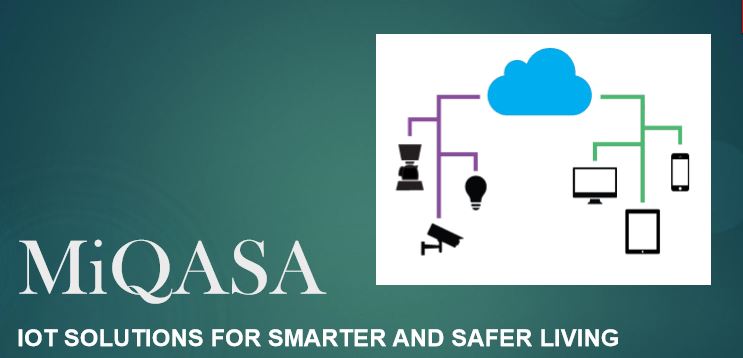
“We got together a team of 4 people to work on the prototype in Hyderabad. It took us close to four months to build the proprietary RF and the firmware, in this case, the switchboard. We tested the product for six more months before building the accompanying app.”
As design is an equally important part of electric interiors, making the design aesthetically pleasing took a further five months. The end product was a board where switches operate on feather touch, the board itself is softer and aesthetically pleasing. The glass panel used to shield the board is the standard 3mm-4mm inch thick glass and the PCB (printed circuit board) sits behind the panel.
App development took a couple months more to integrate the various functions such as mapping out room numbers, room nape, building the interface for switchboard and then applying the desired functionality to the same.
“All in all, the first volume production of 200 switchboards ended in April 2016, a full year after we began. And took about four months total to sell the first consignment because of extensive A/B testing time too. Our initial customers were local distributors, households, business units and even schools,” he adds.
Of the manufacturing process, Santosh divulges that there is a clear demarcation of roles within the team. Procurement and design development is taken care of in-house, printing of the PCB and assembling the switchboard is handled by a third-party vendor. And the final integration of the switchboard with the app as well as installation in a user’s premises, is once again taken care of by MIQASA.
“Creating Awareness Was Our First Challenge”
Building out hardware in India is an expensive proposition, as compared to say, China and Taiwan. Santosh’s insistence on taking on this field bears looking into, as the challenges faced here are myriad and complex.
“When we were first pitching to prospective customers, our first stumbling block began with explaining the product to them. What IoT is, how it is useful and how it can make energy-saving more efficient for you (the client). Most of our time went in educating our would-be customers. So that is the first thing we did. We just built awareness in our initial pitches.”
This led to eventual clients gaining confidence in the use case of the product – providing comfort and convenience through the ease of using an app and simplifying mundane activities such as switching lights on/off, and all at a lower cost.
“In hardware or IoT, any entrepreneur should understand the market his prototype is being built for. The first job is to talk to the customer, walk in their shoes and understand their pain point – interaction is key. India is a large market with enormous potential. But, Indians want everything at a reasonable price point.”
Which brings us to MIQASA’s business model. MIQASA switchboards in varying modules (12, 8, 4, 2) retail for anything between INR 8,000-INR 10,000, which is about 3x the amount a regular switchboard costs (INR 2,500) for a 12-switch module. They work on a B2B system with channels of distribution in Andhra Pradesh and Telangana. At present, they claim to have 12 distributors working with them in the regions of East Godavari, West Godavari, Vishakhapatnam, Nizamabad, and Vijaywada.
50% of revenue is executed before delivery while the remaining is paid after 30 days of the product being delivered.
For its second volume production, the company produced 500 pieces in five months and has generated revenues amounting to approximately $60.7K (INR 40 Lakhs), at the time of article publication. MIQASA also has corporate agreements with established builders to automate entire residential and commercial projects in and around the two states they are operational.
“Smart Living Can Be Affordable If Smartly Done”
To simply dismiss MIQASA’s switchboard as a device that will help a user in switching appliances on and off and ensuring no wastage of power would be easy to do. As Santosh himself puts it, “We guarantee a 15% reduction in the monthly power bill.”
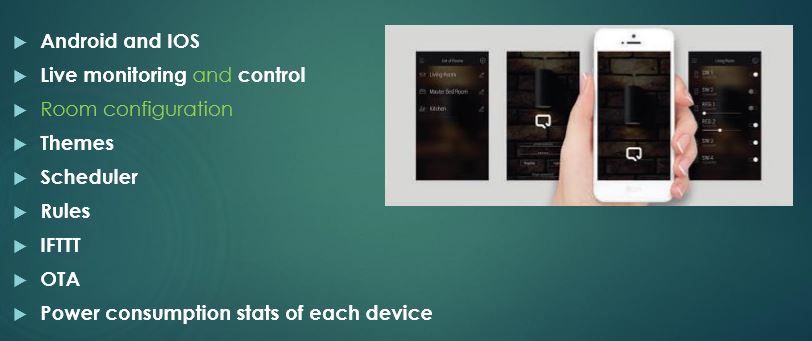
But the app does so much more. MIQASA’s software has integrated predictive analytics which aim to learn the individual habits of their users and suggest actions, accordingly. “For instance, if a particular user works till eight every night and wants to cook dinner in the induction cooker, all they need to do is to do the same for three days. From day four onward, the app will predict this behaviour of the user and a reminder will show up on the app to switch it on.”
MIQASA’s analytics also has a theme-based operation for daytime usage, nighttime usage, scheduling for various activities etc.
Installation, the last cog in the MIQASA wheel is a 5-10 minute process – the switchboard is retrofitted in existing space (much like an existing switchboard) and attached to the wiring system via two wires and the gateway router.
Ease of use, convenience and affordability are three major factors that the nascent company is banking on to take on contenders in the smart living space. It counts Honeywell, Le Grande, Schneider – established players – as well as newer entrants such as Intuit Things as competitors. “Our main USP is the fact that all our play happens on the app. Established companies use different data cables to change the wiring of the house whereas we make use of existing systems and reverse engineered the system to work with our app and the cloud. It’s a one-time cost.”
The company has also passed on essentially lower end tasks – the assembling and printing of the PCBs – to a third party and kept the team lean focussing on generating revenue and getting to market in order to confirm product-market fit as well as scale up.
This move seems to have paid off as the company is now expanded to be present in Pune, Mumbai, and Bengaluru.
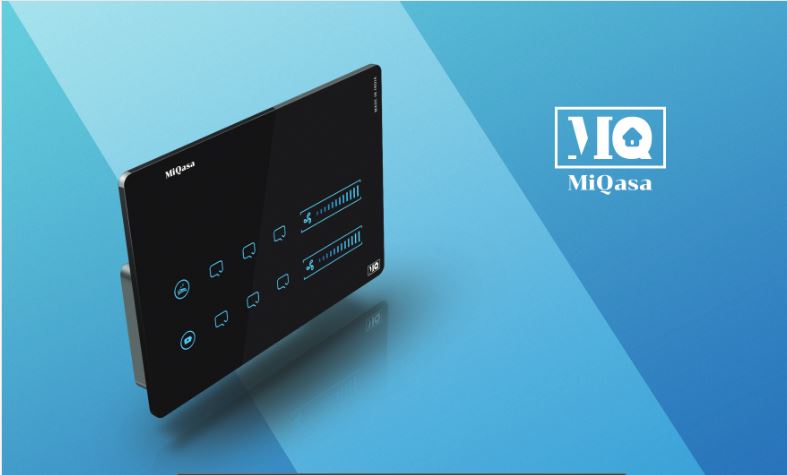
And since those who can’t believe, learn, MIQASA has even set up an Experience Zone at Vijaywada’s One Stop Shop wherein customers can have the various MIQASA products demonstrated live with geysers, lights, ACs etc. “The live demo makes it easy for new users to understand the purpose of the technology and how easy it is to use. We have received at least 1-2 conversions per day with the demos, since we launched the zone.” Santosh also claims 2-3 installations in Mumbai and Vishakhapatnam per day, all of which is leading to a total M-o-M revenue of $10.6K (INR 7 Lakhs)-$13.6K (INR 9 Lakhs).
The company also has plans to utilise AI, machine learning to address deeper functions in the smart living space although hardware, the tangible product will remain their core focus in the months to come. Territory-wise, MIQASA plans to expand to north India in Noida and Gurugram in 2017.
“We have been funded from day one. Investor confidence aside, it is our customers who have shown the greatest faith in us and that is what we are counting on to capture the chunk of the market,” concludes Santosh.
Editor’s Note
The Indian government has been aggressively championing the cause of Digital India and Smart living by announcing the advent of Smart Cities in India by 2030. This has been done so in a bid to reduce the carbon footprint in overpopulated cities like Delhi, Mumbai etc. Urban planning in India is also a matter of interest, as current systems vis-a-vis sewage, infrastructure as well as power have been planned haphazardly and with no thought to burgeoning population as well as depleting resources.
According to this report by LiveMint, Nasscom claims that the IoT industry is estimated to touch $15 Bn by 2020, putting it right up there with the analytics big boys. The tech, in a way, looks to be the easiest solution to reduce dependency on existing power sources by making judicious use of data and technology to track, curb, and change the way power is consumed.
But, due to aforementioned glitches in urban planning as well as the patchiness and disparity in middle-class household incomes, as well as the lack of power in urban-rural areas in Tier II, III regions, MIQASA, Intuit Things and others of its ilk might face the issue of scale, adoption and eventual evangelism when they go for a nationwide presence.
MIQASA does have a lean business model, an agile process as well as proven use-case in Tier II cities such as Vijaywada going for it. How it will be embraced by Tier I operators and thus gain pan-India acceptance, leading to growth is a question that remains unanswered as yet.
MIQASA is part of Inc42’s 42 Fellowship – a year-long fellowship programme for India’s top growing and upcoming startups with the aim to build a close-knit community who can help each other multiply their impact.



